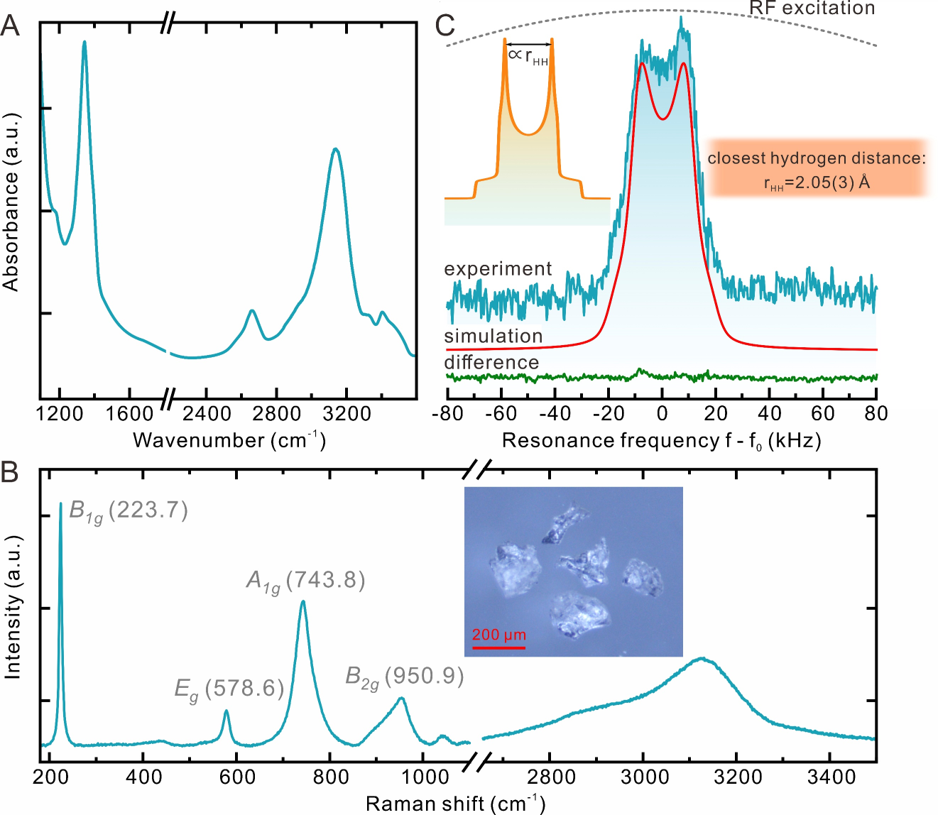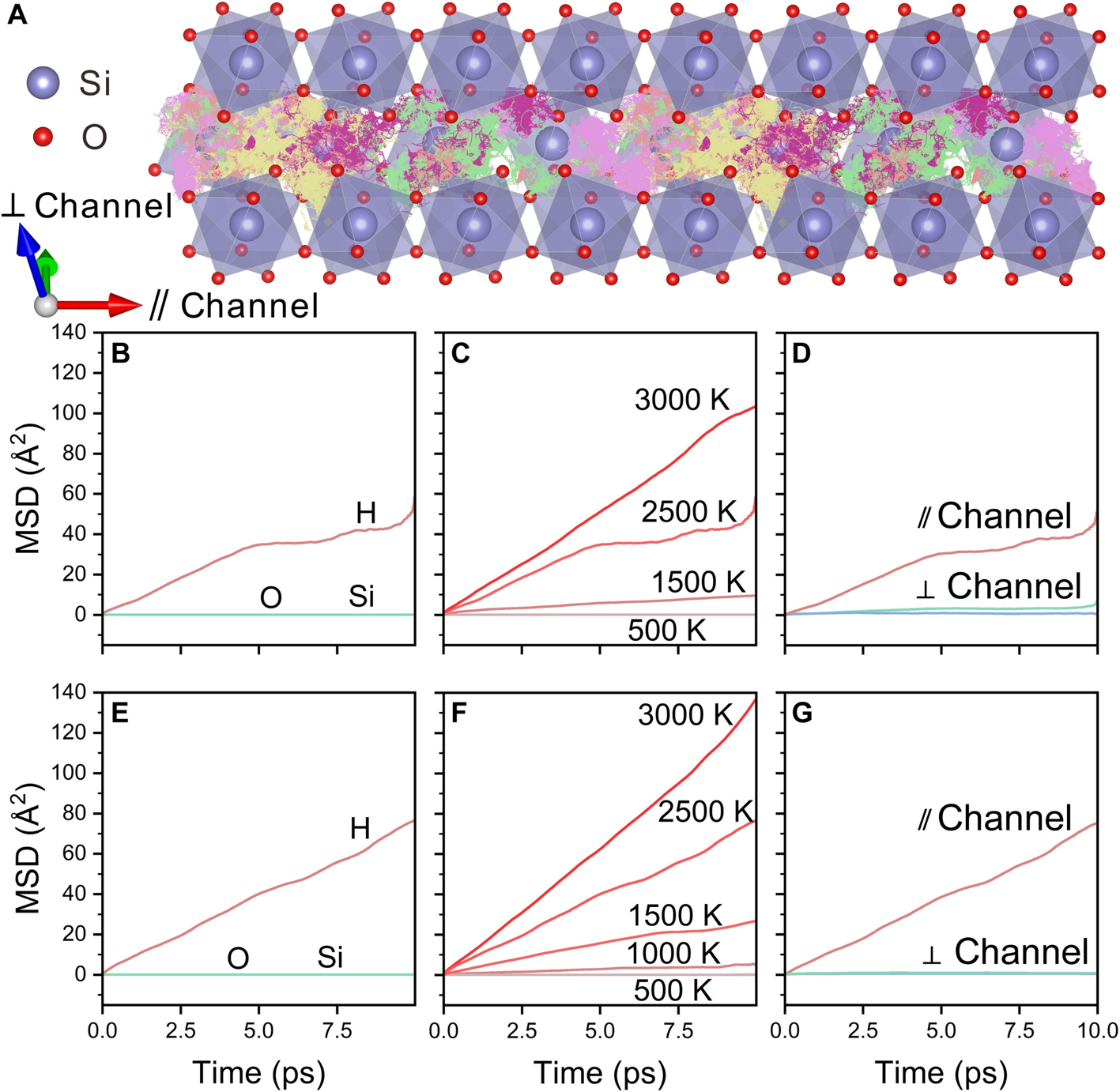New study from a team of scientists led by Dr. Qingyang Hu from HPSTAR (the Center for High Pressure Science and Technology Advanced Research) and Prof. Shengcai Zhu from Sun Yat-sen University, discovered that stishovite and water prefer forming an ordered superstructure with one-dimensional superionic conduit in Earth’s mantle. The research is published in the recent issue of the journal Science Advances.
Stishovite has the same chemical formula as silica quartz (SiO2). While SiO2 is abundant on Earth’s crust, it is also a major component of basalt, a type of igneous rock that is rich in iron and magnesium. When basalt in oceanic crust subducts into Earth’s deep interiors, it is subjected to high pressures and temperatures, triggering basaltic melting and fluid release, i.e. liquid water. These fluids can then react with the surrounding mantle rock, changing its composition.
"This might not be the case if stishovite can absorb a lot of water.” says Junwei Li, the lead author, a PhD student from HPSTAR. "Stishovite can incorporate weight-percent level of water according to recent experimental studies. Thus, stishovite in Earth’s mantle may can store such enormous amounts of water, which is equivalent to a few oceans of water on Earth’s surface.”
A leading consensus is that the water incorporated into stishovite is either from hydroxyl group (OH-) absorption into the crystal lattice or by defect structures via silicon replacement. Both mechanisms have been well studied in the past but it was still unclear so far.
“We employed a revolutionary structural searching algorithm called high-dimensional neuronetwork potential and discovered the most favorable water coordination sites in dense stihovite at high temperatures,” said Prof. Shengcai Zhu, “This algorithm is based on a machine learning algorithm, which can accelerate the speed of the structural search by several orders of magnitudes.” Hydrous stishovite contains more than 100 atoms per unit cell, and the combination with machine learning algorithm make it possible to locate stable structures at reasonable computational costs.
The results indicate hydrous stishovite stabilize in stishovite-water superstructures, exhibiting one-dimensional water channels. Hydrogen atoms behave fluid-like inside the channels at temperatures above 1000 K, leading to an exotic 1D superionic state, similar to superionic ice. Therefore, hydrous Stishovite could feature high ionic mobility, which could explain the previously observed electrical heterogeneity in Earth’s mantle. Given these encouraging results, the research team set out to synthesize hydrous stishovite samples in a laboratory environment. However, synthesis and characterization are very challenging for the predicted stishovite superstructure.
“Although a series of hydrous stishovite samples have been synthesized in the past decade, they either contain a considerable amount of alumina or are synthesized at relatively low pressure and temperature conditions.” said Dr. Yanhao Lin, a staff scientist at HPSTAR. “For the first time, we synthesized alumina-free stishovite single crystals, containing wt-% levels of H2O at low mantle conditions. ”
“Measuring the hydrogen content in nominally anhydrous minerals, especially for such minuscule samples as we were able to prepare, is technically challenging. Conventional structural characterization techniques such as X-ray diffraction become powerless due to the weak elastic scattering of hydrogen atoms.” Dr. Thomas Meier (HPSTAR) a co-author continued. “In order to solve this problem, we used a lab-built nuclear magnetic resonance spectroscopy adopted for the detection of ultra-small samples, which is particularly sensitive to hydrogen nuclei.”
The detected 1H-NMR signals, a fingerprint of the short-scale local environment of each nucleus of hydrogen, which validate the super-structural predictions from the theoretical calculations.

Caption: Vibration spectroscopy and 1H-NMR spectroscopy of hydrous Stv.
“The unique stishovite-water superstructure opens exciting opportunities for exploring novel minerals. Hydrous stishovite is no longer the original stishovite by crystallographic definition. It is a new mineral.” added Dr. Ho-kwang Mao, the chief scientist at HPSTAR. “Water is known to alter the structure of minerals but it is unexpected to form a superstructure with a water channel passing through. This might not be a unique structure for stishovite, but potentially exist in other minerals. The existence of superionic water channels will also largely modify the physical properties of stishovite. For example, since H-atoms diffuse along certain directions, its electrical properties will be highly anisotropic. The discovery of stishovite-water superstructures will refresh our conventional view of water reservoirs in Earth’s deep interiors.”

Caption: Superionic state of Si32O66H4 and Si16O34H4.
二氧化硅是俯冲洋壳玄武岩的主要成分之一,最近的研究表明,二氧化硅的高压相斯石英在地幔深部(如410千米以下深度)的储水能力显著增强,甚至能将重量百分比(wt %)等级的水带到地球核幔边界。因此,斯石英可能是将水向下地幔输运的重要矿物。但斯石英是如何容纳如此多的水呢?有研究认为氢原子主要通过替换斯石英晶格中的硅原子形成点缺陷,也有研究表明含水斯石英中的水是以分子水的形式存在于斯石英的晶格间隙中。由于名义无水矿物中含氢缺陷结构的复杂性及当前高温高压实验和理论计算手段的局限性,在传统实验和理论计算的框架下深入研究斯石英的储水机制极具挑战。针对上述科学问题,北京高压科学研究中心胡清扬研究员与中山大学朱升财副教授带领的研究团队对含水斯石英开展了先进的理论计算和实验研究,得到了含水斯石英在高压下的超精细结构。研究成果以“Silica-water superstructure and one-dimensional superionic conduit in Earth’s mantle”为题在《科学进展》(Science Advances:https://www.science.org/doi/10.1126/sciadv.adh3784)上发表。
